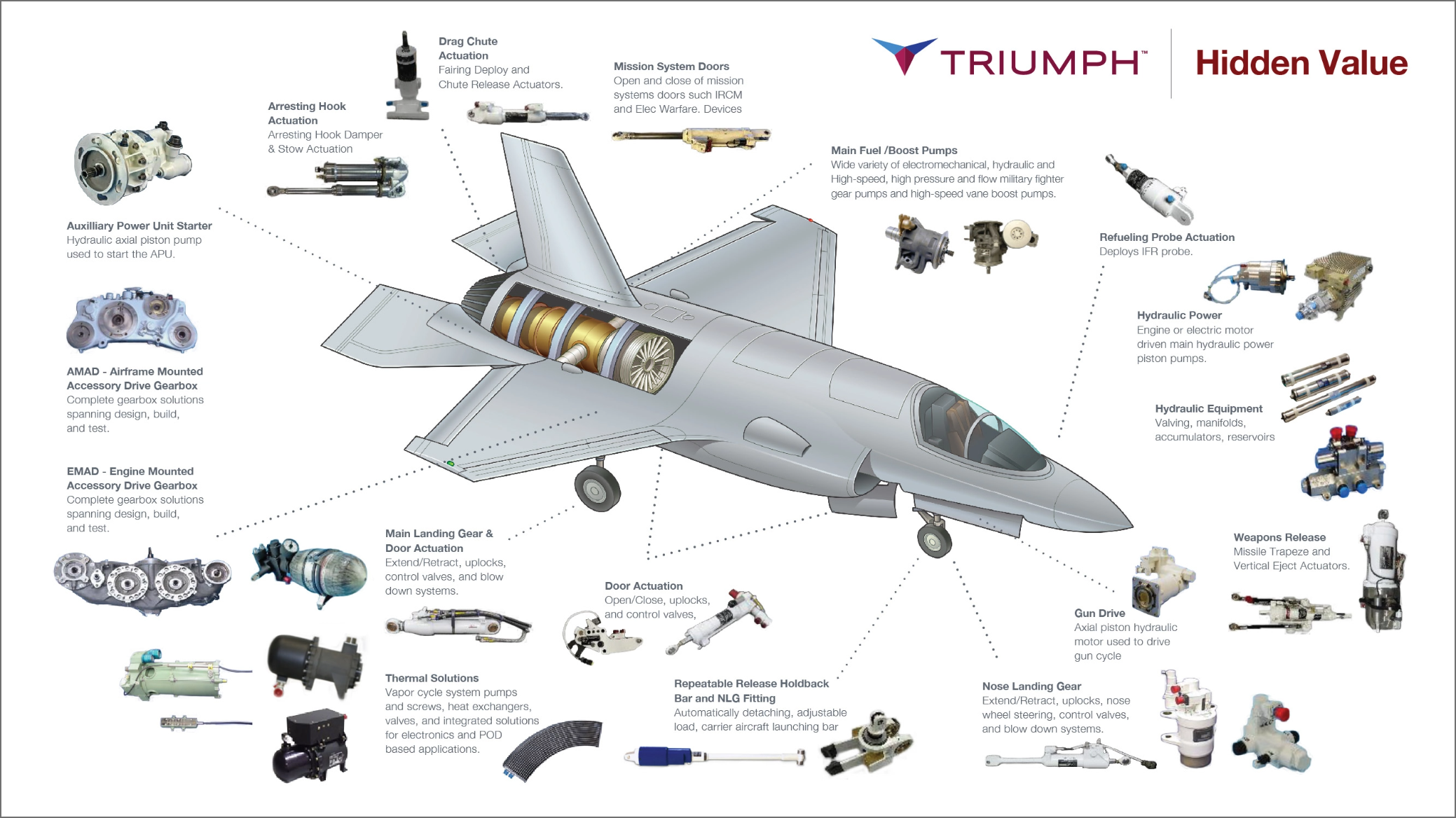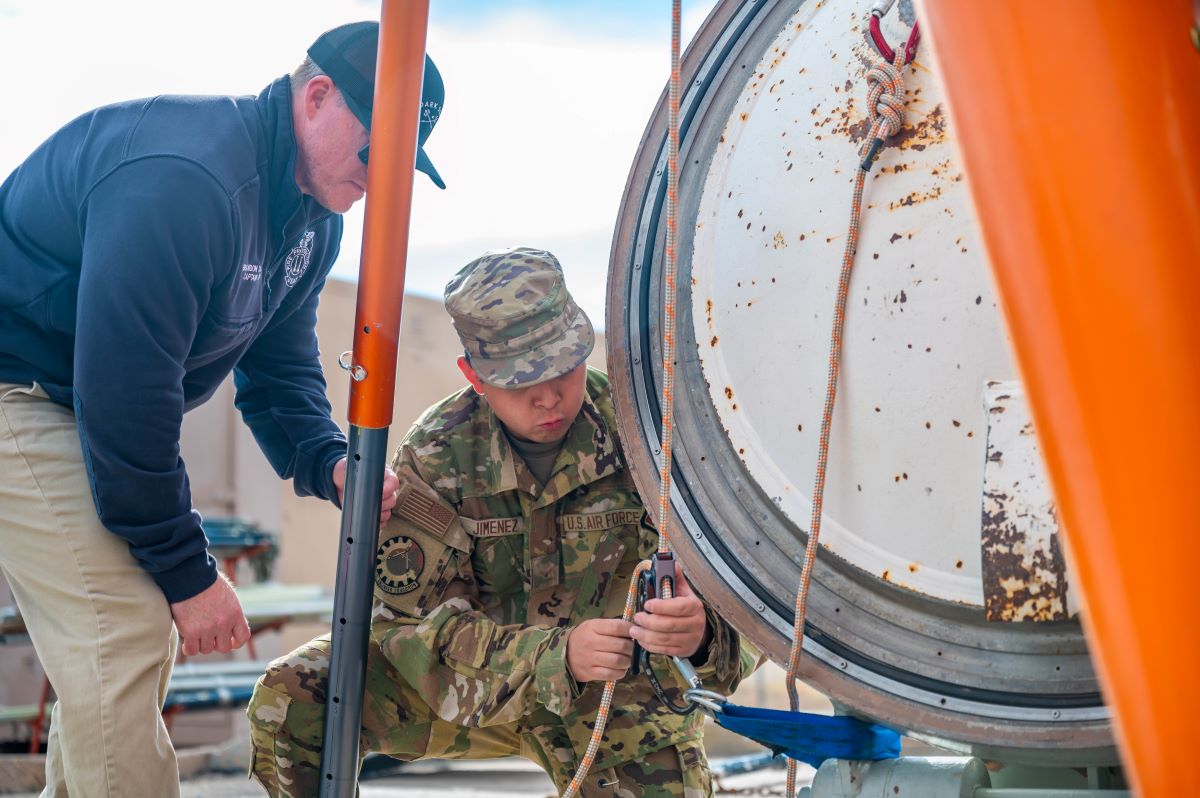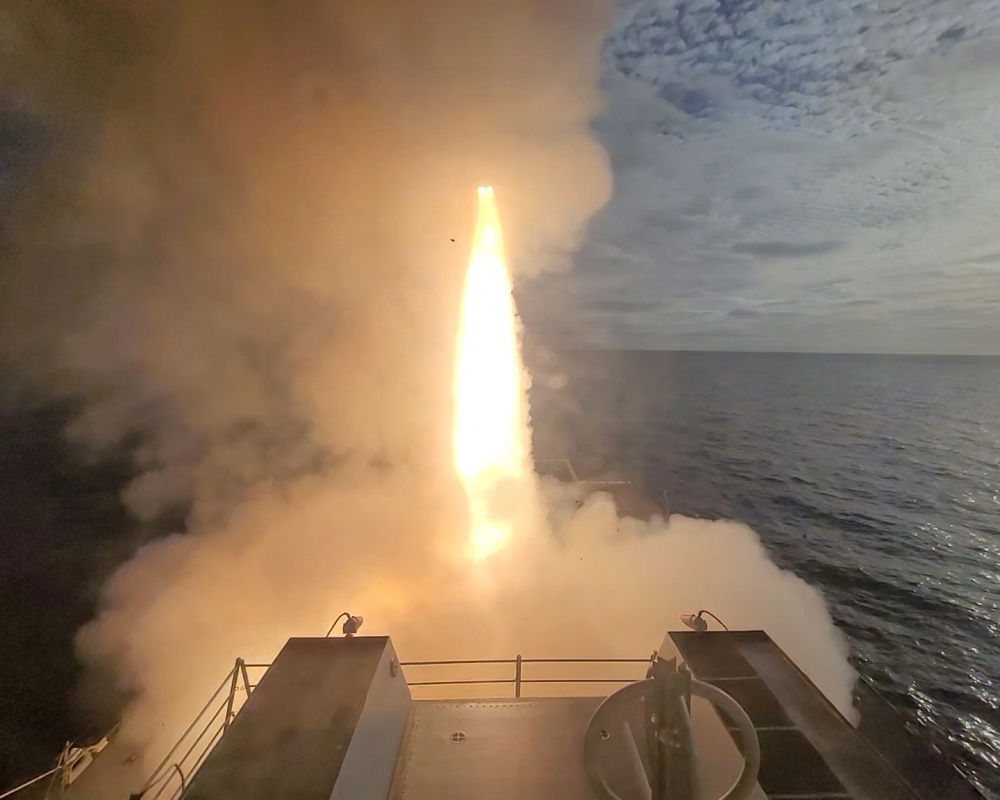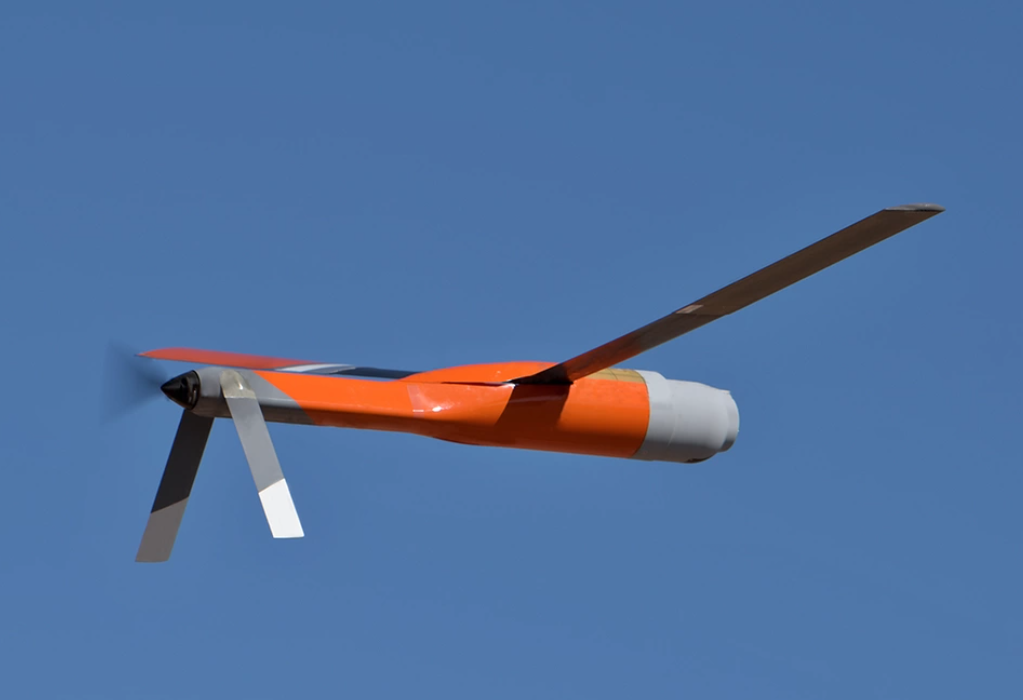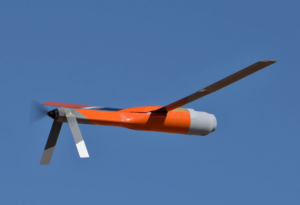Marine C-UAS. A Marine Corps official boasted they are using newly-granted acquisition authorities via a cross-functional team and fusion cell to field a new ground-based counter-unmanned aerial system (C-UAS) defense capability. Speaking before a Jan. 29 WEST 2025 panel, Lt. Gen. Eric Austin, commander of the Marine Corps Combat Development Command and deputy commandant for combat development and integration, said the service plans to deploy this new system this year. “We see a very real need to address counter-UAS for dismounted Marines. And it’s not infantry Marines, it dismounts everywhere.” He also told reporters this unnamed system has several subsets focused on a whole suite of C-UAS capabilities and can leverage other detection mechanisms, “used with joint detect mechanisms and it’s got both [electronic warfare] and kinetic defeat mechanisms. And most importantly it’s man-portable so we’re looking to get that fielded fast.”
Agile Spartan.
U.S. Air Forces Central (AFCENT) said that it has begun a weeks long exercise for AFCENT’s five Air Expeditionary Wings to test the service’s Agile Combat Employment concept of widely spread units/decentralized communications in areas without support infrastructure. “The forward deployments of F-15E Strike Eagles, A-10 Thunderbolt II, and F-16 Fighting Falcon aircraft from major hubs to dispersed locations – while still supporting Operations Inherent Resolve and Prosperity Guardian – models the ability for U.S. airmen to make decisions and generate combat power at the lowest level,” AFCENT said. “Support aircraft, including the KC-135 Stratotanker, E-11A Battlefield Airborne Communications Node, and C-130J Super Hercules will also be executing dispersed operations to evaluate the command’s ability to generate rapid air mobility and contested communications from anywhere in the region.”
Electromagnetic Spectrum. One congressional item to watch may be debate over creating a domain for the electromagnetic spectrum–a military funding line consolidation that could put more emphasis behind efforts to rejuvenate electronic warfare, which fell in importance during the two decades of U.S. counterterrorism after 9/11. Chairman of the Joint Chiefs of Staff Air Force Gen. Charles Q. Brown undertook such efforts as Air Force Chief of Staff when he spurred creation of the service’s 350th Spectrum Warfare Wing which has its headquarters at Eglin AFB, Fla. In 2021, with the support of Rep. Don Bacon (R-Neb.), the co-chair of the Congressional Electromagnetic Warfare Working Group and a House Armed Services Committee member, DoD created the Joint Electromagnetic Spectrum Operations Center–an office to oversee electromagnetic spectrum operations–at U.S. Strategic Command at Offutt AFB, Neb.
Embracing DOGE. The heads of General Dynamics and Northrop Grumman last week expressed their support for, and willingness to work with, the Trump administration’s Department of Government Efficiency office, better known as DOGE. Asked on Northrop Grumman’s fourth quarter earnings call about the DOGE and the new administration’s interest in using more fixed-price contracting, Kathy Warden said, “Net, net, I see more opportunity.” Her company has “embraced the opportunity to share some of our observations and ideas” with the DOGE, and is “starting to do that,” she said. GD Chairwoman and CEO Phebe Novakovic told investors that improving “efficiency and cost structure of organizations is a good thing and we would embrace that.” She also said that most of GD’s programs are “very well positioned for the modern fight,” which has the company in a “pretty good position.”
…Aligned with DOGE. Novakovic and Warden’s embrace of DOGE echoes that of Lockheed Martin Chief Jim Taiclet, who also told investors last week the Trump initiative can reduce regulatory burdens, and streamline and speed acquisition processes. Preceding these defense industry captains in their support of DOGE was Chris Kubasik, who before the presidential inauguration sent a letter to DOGE leader Elon Musk, offering recommendations for efficiencies. Kubasik, who leads L3Harris Technologies, last week said his company’s ongoing LHX NeXT cost savings and operational efficiency effort “embodies the same principles as DOGE, tailored to drive greater speed and efficiency to allow data-driven decision-making.”
…New Aerojet Chief. Keeping with L3Harris, the company in January said that Ken Bedingfield, 52, chief financial officer, will also assume the role of president of the Aerojet Rocketdyne segment beginning Feb. 3. Ross Niebergall, who has led the segment since L3Harris acquired Aerojet Rocketdyne in July 2023, is retiring and will help with the transition. Sam Mehta, 52, who heads the company’s Communication Systems segment, will also lead enterprise Strategic Collaboration Agreements. And Heidi Wood, 59, who leads LHX NeXT, has been elevated to report to Kubasik.
…Northrop Again. Northrop Grumman has realigned its Strike and Surveillance Aircraft Services business unit under the Aeronautics Systems segment, Ken Crews, chief financial officer, told investors during the earnings call. The unit, which previously was part of the Defense Systems segment, provides sustainment activities mainly on programs in the Aeronautics portfolio, he said. “It is now it is now aligned with full product life cycles of Northrop Grumman aircraft, allowing for more seamless development and sustainment of next generation aircraft.” For Defense Systems, realignment, coupled with the completion of an international training programs, gives it a portfolio “centered around strategic deterrence, advanced weapons and missile defense,” he said.
Remote Sensing Award. BlackSky Technology last week said it won a new, seven-year, $100 million contract from an international defense customer to provide high-resolution electro-optical imagery using its current Gen-2 and upcoming Gen-3 imagery satellites. The award also calls for BlackSky to provide artificial intelligence-enabled analytic services. “This commitment now gives the customer priority, long-term access to capacity with the flexibility to accommodate novel Gen-3 features as end user requirements evolve,” Brian O’Toole, BlackSky’s CEO, said in a statement.
Subsea Alliance. Nauticas Robotics and Leidos have formed a strategic alliance around subsea autonomy solutions that builds on prior collaboration between the two companies. Houston-based Nauticas has developed the electric power-based Aquanaut autonomous underwater vessel and an unmanned vehicle software platform to conduct a range of missions, including pipeline repair and seabed scanning. Nauticas said the alliance combines the companies’ respective expertise to develop next-generation autonomous underwater systems to conduct “increasingly complex missions.”
People News. HII has promoted Derek Murphy to vice president of new construction aircraft carriers at the Newport News Shipbuilding division. A Navy veteran, Murphy has also worked at HII’s Ingalls Shipbuilding division and joined Newport News in 2020 as program director on the John F. Kennedy (CVN 79) carrier construction. Momentus Space, which is offering satellite busses and other in-space transportation services, said that Paul Ney, chief legal officer, has joined the Trump administration as deputy counsel to the president for National Security Affairs and the National Security Council’s legal adviser. Macquarie Capital has hired David Farkas as managing director to enhance the investment firm’s aerospace, defense, and government services advisory practice. Farkas has held roles at Alix Partners, Renaissance Strategic Partners, GE Aerospace, and Honeywell Aerospace advising on mergers and acquisitions.
Wicker Meets Trump. Sen. Roger Wicker (R-Miss.), chair of the Armed Services Committee, met with President Trump on Jan. 30 and said during the discussion he offered his “commitment” to the administration’s “Iron Dome For America” project, efforts to build out a next-generation naval fleet and restoring munitions stockpiles. Wicker said they also discussed “supercharging the ‘peace through strength’ agenda through defense investment in upcoming budget reconciliation legislation.” “This is the moment for the president and Congress to enact the ‘peace through strength’ policies that the America needs,” Wicker said in a statement following his meeting with Trump.
Don’t Make Them Choose. During the WEST 2025 naval conference in San Diego on Jan. 29, a U.K. Royal Navy official urged U.S. and allied countries to not make Indo-Pacific countries pick only China or them. “One of the challenges I think we’re going to face is that we should be very careful to not force Indo-Pacific nations to choose China or someone else. Because the way in which global trade is interconnected at the moment means that China has a trump card of maritime trade that no other nation on the planet has got,” Rear Adm. James Parkin, a U.K. Royal Navy official responsible for overseeing development of technologies, said.
…Chinese Commerce Leads. Parkin said China built 158 merchant ships over a certain size compared to the five-eyes total of three. “Last year they overtook Greece to become the largest operator of merchant ships on the planet,” Parkin added. He also noted a 2016 Chinese law allows the government to turn merchant ships into state-owned in a conflict zone, so 19,000 more state-owned vessels can enter a conflict beyond standard Chinese People’s Liberation Army-Navy and Coast Guard ships. Parkin said the answer is to convince everyone, including China, that maintaining the “rules-based order” is best and most successful for everyone, so trade relationships bind too hard to make conflict easy. Parkin said, in contrast, if the U.S. and allies force, especially Pacific island countries, to choose between them and China, “I worry that given the merchant network, the web of Chinese state-owned enterprises around the planet, that levers of power than China can apply to island nations in particular are so powerful – we’ve got to avoid ever asking them that question.”
SecArmy Nom/DOGE. Dan Driscoll, Trump’s nominee to be Army secretary, said during his confirmation hearing on Jan. 30 he would work with Sen. Joni Ernst (R-Iowa), who leads the Senate’s Department of Government Efficiency (DOGE) Caucus, to assess where there is waste and inefficiencies within the service. “The dollars are limited, as they should be. We are beholden to this committee and this Congress for how to use those dollars. But once the dollars come to us, it’s our responsibility to use them as effectively as we possibly can. And it would be an honor to work with you on that, if confirmed,” Driscoll said.
Drones. Driscoll, during his confirmation hearing, also told lawmakers that drones and swarming capabilities have “changed how warfare is fought.” Driscoll, an Army veteran, added that the Abrams tanks have “soft spots” that are vulnerable to drone attacks. “We can no longer shoot $4 million missiles to take down a $400 drone. That simple math just doesn’t add up. We’re going to have to find solutions, whether it’s directed energy or whatever it is, that can have a cost-effective way to provide security,” Driscoll said.
Moog Pac-3 MSE. Moog Inc. on Jan. 29 said Lockheed Martin selected it to provide “custom actuator” for the Patriot Advanced Capability-3 Missile Segment Enhancement (PAC-3 MSE). The company noted this is one of the largest contracts in company history, valued at over $100 million. The company said its electromechanical actuators “ensure precision steering enabling PAC-3 MSE missiles to engage intended targets.” Production will occur at Moog’s Salt Lake, Utah facility.
LPD-32 Starts. HII’s Ingalls Shipbuilding division on Jan. 29 marked the official start of fabrication on the future USS Philadelphia (LPD-32), the third Flight II San Antonio-class amphibious transport dock ship. HII is the only provider of LPDs to the Navy and has delivered 17 ships so far, through LPD-29. The two preceding ships are already under construction: the future USS Harrisburg (LPD-30), Pittsburgh (LPD-31). In September 2024 the Navy awarded HII a contract to produce LPD-33, -34 and -35. The Flight II LPDs are meant to replace the aging Whidbey Island (LSD-41) and Harpers Ferry (LSD-49) class ships that support the Marine Corps Air-Ground Task Force.
HII VR Welding. HII’s Ingalls Shipbuilding marked the opening of a new virtual reality (VR) welding lab at its facility in Pascagoula, Miss., on Jan. 30. The new facility seeks to integrate VR technology into the current welder certification curriculum, to provide new and current company shipbuilders a more “immersive, hands-on experience to develop critical shipbuilding skills.” The company argued the new VR system will make it easier and safer for welders to hone skills and improve HII’s ability to grow its proficiency in these skills.
DEI Savings. President Trump’s Elon Musk-led Department of Government Efficiency last Friday touted its success in finding savings in its quest to eliminate diversity, equity, and inclusion (DEI) efforts within the federal government. So far, the DOGE has terminated 104 DEI-related contracts, the office posted on X, which is owned by Musk. Of the contracts and savings, the post says one Defense Department contract that was canceled saved nearly $2.1 million out of a $3.6 million ceiling value. For the Department of Homeland Security, seven contracts were canceled resulting in a $14.9 million savings. The ceiling value on those awards was $43.3 million. The largest savings on the list, amounting to $495 million, came from three contracts with the Office of Personnel Management. Those contracts had a $516.8 million ceiling value.
